Buildings
Highlights
Scroll down for the full set of indicators.

Efficiency Opportunities
Residential and commercial energy consumption primarily occurs indoors. Buildings are home to many energy efficiency opportunities (e.g., improving the building envelope, sourcing of construction materials, water efficiency, energy management systems, smart buildings) as well as energy-consuming products (e.g., appliances, plug loads, HVAC systems)

Residential Building Energy Use
Residential energy use per household has fallen by roughly 16% from 2001 to 2021.

Energy Efficiency Gains for Appliances and Devices
The energy efficiency of appliances has increased dramatically since 1980, due to a combination of federal standards and the ENERGY STAR® product certification program. A typical household saves about $500 per year on utility bills due to minimum energy performance standards for appliances, and ENERGY STAR® has helped drive down energy use by refrigerators and clothes washers by 24% (since 1996) and 30% (since 2004), respectively.

Tools to Understand and Enhance Building Efficiency
Benchmarking; energy rating, such as through the Home Energy Rating System or Home Energy Score; and certification (including ENERGY STAR® and LEED) can drive efficiency in buildings. Zero net energy buildings and smart buildings are also growing rapidly.
Model Building Energy Codes
Model building energy codes are expected to save $138 billion in energy costs and 13.5 quads of primary energy over the 2010 to 2040 timeframe.
Benchmarking and Building Performance Standards
As of 2021, 14% of all commercial floorspace in the U.S. is subject to benchmarking requirements and over 30 jurisdictions have committed to adopting energy performance standards for existing buildings.
23
Energy Efficiency and Household Cost Reductions
Energy efficiency has driven down energy consumption per household by approximately 16%
Sources: EIA (2022), Monthly Energy Review; Census (2021)
DETAILS
Energy consumption in residential buildings is responsible for approximately 13% of total energy consumed in the U.S.1 Despite some variability, total residential energy use has remained largely constant, falling only 3% between 2005 and 2021. Due to energy efficiency, per-household energy consumption has fallen by roughly 16% over the same period. This is notable, given that the average U.S. resident lives in a larger, better-acclimated home with significantly more devices.
24
Appliance Energy Efficiency Improvements
Appliances and equipment have become more efficient across the board, using a fraction of the energy required in 1980
Source: AHAM data (2018)
DETAILS
The efficiency of appliances has increased significantly in the last decades. The chart shows the relative average energy consumption of new appliances sold over the 1980-2018 period. Clothes washers and refrigerators showed the greatest improvements (80% and 60% reductions in energy consumption, respectively) but have begun to plateau in recent years.2 Similarly, improvements in gas furnaces, central air conditioners, and heat pumps have slowed after significant efficiency gains between 1980 and 2010. The overall gains were driven in large part by federal standards (indicator #26), ENERGY STAR® (indicator #27), tax credits, and utility rebates.
25
Policy Impact: Federal Appliance Standards
Policies for appliance efficiency are saving 14% of the total electricity generated in the U.S. and 6% of delivered natural gas
Source: ACEEE & ASAP (2022)
Source: ACEEE & ASAP (2022)
DETAILS
Federal appliance standards ensure a base-level efficiency for all appliances on the market and have led to large-scale energy savings of both electricity and natural gas since 1990. These savings add up to enormous benefits for U.S. households and businesses. A typical household saves about $500 per year on utility bills because new household appliances and heating, cooling, and lighting products comply with minimum standards.3 Estimates suggest the federal appliance standards program saved nearly 680 TWh in 2021 relative to efficiency levels without standards, which is over 16% of the total electricity that was generated in the U.S. in 2021 (4,115 TWh).4
26
Market Impact: ENERGY STAR®
The ENERGY STAR® voluntary certification program has enhanced the market value of efficiency and raised consumer awareness about its benefits
Source: EPA (2019)
Source: EPA (2019)
DETAILS
ENERGY STAR Products®, a part of the ENERGY STAR® program, has grown to cover more than 75 product categories and 60,000 product models, some of which have reached market penetrations as high as 90%.5, 6 For example, ENERGY STAR® specification for refrigerators was established in 1996 and has been revised and strengthened multiple times, helping to reduce the average energy consumption of refrigerators by 24% while the average volume increased 18% from 1996 to 2017. Established in 1997, ENERGY STAR® specifications for clothes washers were also strengthened multiple times, facilitating a 30% drop in energy consumption while the average capacity increased 34% from 2004 to 2017. Americans purchase more than 300 million ENERGY STAR®-certified light bulbs annually, with an overall annual market value of more than $100 billion.
27
Commercial Building Energy Intensity
Gains in lighting and space heating efficiency have decreased energy intensity in commercial buildings, but demand in other areas is driving increased commercial energy use overall
DETAILS
Gains in lighting and space heating efficiency have decreased energy intensity in commercial buildings, but demand in other areas is driving increased commercial energy use overall.
Total commercial building energy consumption per square foot has been declining, in large part due to significant savings in lighting and space cooling, which fell by roughly 600 and 1,000 trillion Btu, respectively, from 2007 to 2021.7
However, total energy consumption in this sector has been rising due to increased development – with square footage rising from 77 billion in 2007 to 94 billion in 2021 – and increases in certain areas, such as the energy consumed by office equipment and computing, cooling, ventilation, and other loads.
28
Market Impact: Efficient Lighting from 2001 to 2015
Rapid gains in more efficient lighting, including CFLs and LEDs, have reduced energy use in lighting by 16% in 14 years, while inventory grew 25%
Source: Navigant Consulting (2001, 2010, 2015), U.S. Lighting Market Characterization
DETAILS
A success story of bringing RD&D technologies to market, drastic efficiency gains in light bulbs have allowed the U.S. to decrease its energy use from lighting by 16% while increasing lamp inventory by 25% from 2001 to 2015.8 Compared to a traditional 60W incandescent bulb, an 8.5W light emitting diode (LED) consumes 85% less energy9 and lasts from 10 to 25 times as long.10 Furthermore, the price of LEDs per lumen has fallen by 75% from 2012 to 2016, and the market penetration has grown from less than one percent to 13.5% over that same time period. In contrast, energy use from high-intensity discharge lamps (HIDs) – a less efficient high-output lamp used in street lighting, warehouses, and sports arenas – continues to grow for outdoor uses.11 Nevertheless, DOE’s September 2019 rule that rolls back energy efficiency standards for light bulbs creates uncertainty in the future of the market.12, 13
29
Growth in LED Sales After 2015
LED light bulbs represent the largest share of the market since 2017
T5/T8/T12/T-LED Lamp Sales Indexes
(Avg. Qtr. 2015=100)
Source: NEMA (2022)
Market Penetration (in %)
Source: NEMA (2022)
DETAILS
Though they were only introduced in the 2000s, LED sales of A-line bulbs have grown quickly, resulting in a growth of market penetration from nearly zero to almost 50% within a span of five years (2012-2017), and has since grown to over 75%. The LED bulbs also last much longer. However, market growth has slowed in recent years. Since 2020, the market share of LEDs has hovered around 75%.
The market share of LEDs also showed rapid acceleration for tubular bulbs (primarily used in the commercial and industrial sectors), achieving more than 30% of the fluorescent lamp market share by 2022. As of the first quarter of 2022, T-LED shipments had an annual increase of 6.6%.14 Their adoption has also been driven by their greater controllability, which leads to additional energy savings in commercial buildings. For example, LEDs are more easily paired with digital control systems, can feature both dimmable and color-changing features, and expel less waste heat.15
30
Building Energy Performance Benchmarking and Transparency
Commercial building energy performance benchmarking incentivizes energy efficiency and is increasingly required by cities and states
Source: BCSE & BloombergNEF (2022), 2022 Sustainable Energy in America Factbook
Source: EPA (2022)
DETAILS
Benchmarking can help facility managers set reasonable energy efficiency goals, discover energy waste, and assess the effectiveness of energy savings programs. The U.S. Environmental Protection Agency found that buildings that were consistently benchmarked reduced energy use by an average of 2.4% per year.
A number of states and localities have implemented benchmarking requirements using ENERGY STAR® Portfolio Manager in the last decade, such that the square footage of floor area required to be benchmarked has increased dramatically. Benchmarking through ENERGY STAR® Portfolio Manager has grown to represent close to 25% of U.S. commercial floorspace.16
Benchmarking requirements typically apply to commercial, public, and sometimes multifamily buildings. Benchmarking can benefit residents by motivating building owners to pursue energy-efficiency investments. In Massachusetts, multifamily benchmarking data was used to target low-performing buildings for improvements. Austin, Texas is the only city to require benchmarking for single-family homes.
31
Residential Home Energy Use Rating and Certification Tools
More than 4 million energy performance ratings and certifications have been performed since 2012
Source: RESNET (2022); DOE (2022)
Source: EPA (2022)
DETAILS
Ratings and certifications bring greater transparency to energy efficiency opportunities and can result in a clearer understanding of utility bills and opportunities for savings, incentives to invest in energy-efficient construction, and help for homebuyers to qualify for loans.17, 18 Residential homeowners, builders, and property developers have several tools that can be used to achieve a deeper understanding of a home’s energy performance, including the Home Energy Rating System (also known as a HERS rating), and Home Energy Score (HES rating).
HERS provides an estimate of energy performance in new homes, while HES ratings apply to existing homes. The first chart shows annual ratings performed by year, with increases in the use of both rating systems. Cumulatively, more than 2.2 million homes are estimated to have HERS ratings, or approximately a fifth of new homes today.19 More than 170,000 homes have received HES ratings.
While HERS and HES provide an energy efficiency rating regardless of the home’s performance, ENERGY STAR® certifies new homes that have achieved higher levels of energy efficiency. The cumulative number of ENERGY STAR® certified homes reached more than 2.3 million in 2021. (Note that many homes receive more than one rating or certification.)
32
Home Performance Data
More than 1 million homes have received energy updgrades through the Home Performance with ENERGY STAR® program
Source: EPA (2022)
DETAILS
The Home Performance with ENERGY STAR® program is a national home energy upgrade program coordinated by the U.S. Environmental Protection Agency and the Department of Energy through a network of local utilities, non-profits, and contractors. As of 2021, over 1 million homes have been upgraded through the program. The Home Performance program uses a whole-home approach to achieve as much as 20% energy savings, as well as to improve comfort and health by addressing mold, pests, and air quality. These homes include single-family, multifamily, and some manufactured homes.20
33
Building Certification by ENERGY STAR® and LEED
ENERGY STAR® and LEED commercial building certifications have increased by nearly 3- and 6-fold since 2010
Source: EPA (2022), ENERGY STAR®-Certified Building and Plant Locator (database)
*as of 9/2/2022
Source: USGBC (2022)
DETAILS
ENERGY STAR® certifies buildings that exhibit better energy performance than 75% of similar buildings nationwide, verified by a third party. On average, ENERGY STAR®-certified buildings use 35% less energy and cost $0.54 less per square foot to operate than their peers.21 In 2021, more than 280,000 buildings, comprising 27 billion square feet of floor space, used ENERGY STAR® Portfolio Manager to measure and track their energy use, water use, and waste and materials.22
LEED certifies the design, construction, and operations of a building. LEED requires the modeled design for its certified buildings to be better than a baseline building’s energy performance by 5% for new construction and by 3% for major renovations, but most LEED buildings are much more efficient than the minimum requirement.23, 24 A 2014 study documented that the average design efficiency of LEED projects in the study was approximately 27% better than the reference code.25
Post-occupancy studies have also borne out the energy performance of LEED buildings: a 2015 assessment of buildings in Washington, D.C., found that LEED-certified office buildings exhibited 13% less energy use intensity than their peers, and a 2016 report by the State of Washington found that by implementing green building practices, state agencies and higher educational facilities reduced their energy use by an overall average of 37%.26, 27 A 2018 GSA latitudinal study also examined 200 buildings over a three-year period, finding that compared to legacy buildings, GSA’s high-performing buildings showed 23% less energy use.28
34
Model Building Energy Codes
Building energy codes have reduced covered energy use in buildings by more than 40% over four decades
Source: PNNL (2022)
State Residential Code Efficiency
Source: PNNL (2022)
DETAILS
Building energy codes set minimum efficiency requirements for renovated or new buildings, often locking in savings through the building’s lifespan (which can reach over 50 years).29 Model energy codes are conservatively expected to save $138 billion in energy costs and 13.5 quads of primary energy from 2010 to 2040.30 A home built to the specifications of the International Energy Conservation Code of 2021 would use roughly 45% less energy than if it had been built using standard practices from 1975. As of 2022, only three states have adopted efficiency standards comparable to the International Energy Conservation Code of 2021.31
35
Zero Net Energy Buildings
The U.S. market for zero net energy buildings is growing rapidly
Sources: Team Zero (2021), Inventory
*As of July 2022. All values exclude multifamily.
DETAILS
The construction of zero net energy and zero energy ready buildings is a very recent trend that still constitutes a small fraction of the building market but is growing rapidly. 32 From 2017 to 2020, the total number of residential units nearly doubled. As of July 2022, the number of verified commercial buildings has reached 154 and the number of emerging commercial buildings striving for zero net energy has reached 462, respectively representing a 30% and 70% increase since 2018. 33 Certifications such as LEED Zero may help drive more zero net energy projects by facilitating recognition and incentives. States and cities are also beginning to incorporate zero net energy into codes and stretch codes. 34
36
Building Performance Standards
Over 30 jurisdictions are committed to passing building performance standards by 2024
U.S. Cities and States with Building Performance Standards in Place
IMT (2022) Building Performance Standards
Jurisdictions in the National Building Performance Standards Coalition
Contributing Cities and Counties
Annapolis, MD
Aspen, CO
Atlanta, GA
Boston, MA
Boulder, CO
Cambridge, MA
Chicago, IL
Chula Vista, CA
Columbus, OH
County of Los Angeles
Denver, CO
Evanston, IL
Fort Collins, CO
Grand Rapids, MI
Ithaca, NY
Kansas City, MO
Los Angeles, CA
Milwaukee, WI
Montgomery County, MD
Montpelier, VT
New York, NY
Orlando, FL
Philadelphia, PA
Pittsburgh, PA
Portland, OR
Prince George’s County, MD
Reno, NV
Sacramento, CA
San Diego, CA
San Francisco, CA
Savannah, GA
Seattle, WA
St. Louis, MO
Washington, DC
DETAILS
While building efficiency codes are an effective policy solution for improving building energy performance, codes only impact new construction or alterations, which only slowly affects the total building stock. As of 2018, roughly 91% of all commercial buildings were over eight years old (built before 2010).35 Typically, building structures last 70 to 80 years.
A building performance standard (BPS) is a policy that sets energy use or greenhouse gas emission targets for existing buildings. BPS policies can complement codes for new buildings and can be adapted based on the jurisdiction. BPS policies typically set increasing targets over time, with timelines often varying based on the size of the building or equity considerations, such as allowing extended timelines for compliance for affordable housing (e.g., St. Louis and DC).36
In January 2022, the federal government launched the National BPS Coalition. Over 30 participating jurisdictions are committed to passing a building performance policy by Earth Day 2024.37
37
Smart Buildings
Market value of building automation systems in the United States expected to grow by nearly 40% in next 6 years
*2026 figures represent the projected estimate
Source: Mordor Intelligence (2022), Industry Growth
DETAILS
Building automation systems relate and integrate different facility technologies, ranging from surveillance, lighting, HVAC, and more, all through a central monitoring point. In the United States, the commercial building automation systems (BAS) market was valued at $4.75 billion as of 2020. Forecasts expect it to reach $6.63 billion by 2026. From 2021 to 2026, there is an expected compound annual growth rate of 6.31%.38
38
State-Level Appliance Efficiency Standards
Eighteen states and the District of Columbia have established appliance efficiency standards
Source: ASAP (2022), State Adoption of Energy Efficiency Standards
DETAILS
Since 2019, the number of state-level appliance standards has more than doubled, with a total of roughly 220 new standards in place. Currently, 18 states and the District of Columbia have established appliance efficiency standards across a range of 32 different product types that are either allowed to exceed or are not covered by the U.S. Department of Energy’s minimum energy performance standards.39
For products that are not yet covered nationally, state standards can build momentum around efficiency for new types of equipment. For instance, California was the first state to adopt a commercial clothes washers efficiency standard in 2002, shortly followed by eight more states, before the first federal standard for clothes washers was adopted by Congress in 2005.40 In 2021, the first state-level standards were adopted for commercial ovens, electric vehicle supply equipment, and gas fireplaces.
Footnotes
- EIA (2022), Monthly Energy Review
- ASAP (2022), Refrigerators and Freezers
- ACEEE (2017), Energy-Saving States of America: How Every State Benefits from National Appliance Standards
- EIA (2022), Electricity Data Browser
- ENERGY STAR (2019), ENERGY STAR By the Numbers and About Products
- As in the case for ENERGY STAR® dishwashers. ENERGY STAR Unit Shipment data
- EIA (2022), AEO 2020 through AEO 2010
- Navigant Consulting (2001, 2010, 2015), U.S. Lighting Market Characterization
- ASAP/ACEEE (2018), US Light Bulb Standards Save Billions for Consumers But Manufacturers Seek a Rollback.
- DOE (2022), Diode (LEDs) consumes 90% less energy and lasts 25 times as long.
- BCSE & BloombergNEF (2019), 2019 Sustainable Energy in America Factbook
- DOE (2019), Energy Conservation Program: Definition for General Service Lamps
- ASAP (2019), Rollback of light bulb standards would cost consumers billions
- NEMA (2022), LED Lamp Shipments Index
- LCA (2016), Seven Trends in LED Lighting Control
- EPA (2022), ENERGY STAR Portfolio Manager
- While ENERGY STAR®, HERS, and HES are the most common certification and rating systems, there are also others, including Net Zero Energy Building Certification, Passive House Certification, Green Built Homes, and LEED Zero.
- DOE (2016), DOE’s Home Energy Score and FHA Mortgages: New Tools to Help You Shop for and Buy an Energy Efficient House
- Census (2021), New Residential Construction
- Home Performance with ENERGY STAR ®. Data from EPA
- ENERGY STAR (2022), ENERGY STAR certification for your building
- EPA (2022), ENERGY STAR Impacts
- According to ANSI/ASHRAE/IESNA Standard 90.1–2010, Appendix G (Note: LEED’s current system being tested includes update to Standard 90.1-2016, see USGBC (2019), LEED v4.1).
- USGBC (2019), LEED BD+C: New Construction | v4 – LEED v4
- USGBC (2014), The LEED Plaque Unpacked: What a Decade of LEED Project Data Reveals About the Green Building Market
- USGBC (2015), LEED buildings outperform market peers according to research
- Washington State Department of Enterprise Services (2016), High Performance Public Green Buildings
- U.S. General Services Administration (2018), The Impact of High Performing Buildings
- Building Codes Assistance Project, Energy Codes 101
- DOE (2021), The Impact of Building Energy Codes
- PNNL (2022), Status of State Energy Code Adoption: Residential Buildings
- 970,000 single-family homes and 371,000 multifamily units were completed in 2021. Census Bureau (2019), Characteristics of New Housing
- New Buildings Institute (2022), Getting to Zero Buildings Database
- ZERO Code – California commercial (proposed/alternate); Title 24-2019 – California residential statewide code Residential; Appendix Z – Washington D.C commercial alternate compliance path; Executive Order No. 10-20—Oregon Residential Zero Energy Ready Home by 2022.
- CBECS (2019), 2018 CBECS Survey Data
- IMT (2022), Comparison of U.S. Building Performance Standards
- National BPS Coalition (2022), About the National BPS Coalition
- United States Commercial Building Automation Systems Market Size, Share | 2022 – 27 | Industry Growth (mordorintelligence.com)
- ASAP (2022), States
- ASAP (2022), Clothes Washers, Commercial

